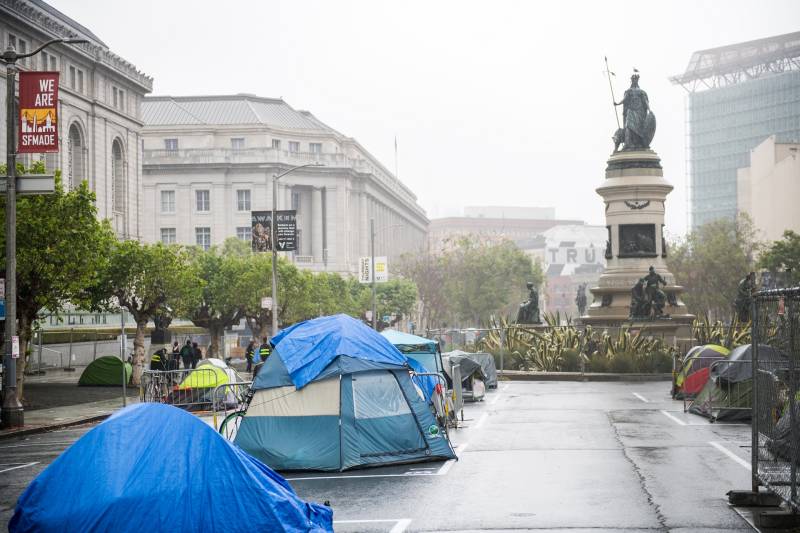“We just haven’t had the level of resources needed to achieve very significant change,” said Ken Kirkey, chief partnerships officer with All Home.
The blueprint emphasizes prevention — for every unit of temporary housing built, the nonprofit calls for two permanent units and four preventive interventions, such as emergency rental assistance to help with a security deposit — and has garnered endorsements from cities and counties across the region. However, the updated report cites several key roadblocks to progress, including a failure to invest in programs aimed at prevention, public frustration that stymies the political will to fund homelessness solutions at scale and inadequate funding.
In an effort to chip away at those, the new report comes with an interactive dashboard that allows users to see how spending money on one preventive solution affects the overall cost of reducing homelessness.
For instance, according to All Home’s modeling, reducing Bay Area homelessness by 75% in five years without spending any money on programs to prevent new homelessness would require some 10,000 units of temporary housing and 47,000 permanent homes at a cost of nearly $11 billion.
Spending about $1.4 billion on prevention efforts, the model shows, would reduce the number of new temporary shelter beds needed to about 2,400 and bring down the number of new permanent homes to about 31,000, reducing the total cost to achieve the same decrease in homelessness to about $8.6 billion.
“It really highlights that investments in targeted prevention are not only vitally important to helping individuals and households avoid the trauma of experiencing homelessness, but from an administrative standpoint, it is also more cost-effective,” said Adrian Gonzales, deputy chief of programs for All Home.
The dashboard allows users to explore costs for individual counties or the entire region. It draws on data from the federal government’s Point-In-Time Count and Homeless Management Information System.
The updated regional plan reflects recommendations from a recent state audit that found the state lacks the infrastructure to evaluate how well its response to homelessness works. It includes a tool aimed at helping cities and counties hold themselves accountable by tracking their progress using key metrics, like the number of people returning to homelessness and the number leaving temporary placements for permanent homes.
“We know pretty well what prevents and ends homelessness,” said Ray Bramson, chief operating officer at the nonprofit Destination: Home, who served on an advisory committee that helped shape the action plan.
It’s putting those solutions to work at the necessary scale that’s the challenge, he said. “The best way to get those dollars that we need to make these solutions work is to look at a regional level and get all the communities together rowing in the same direction.”
Bay Area voters may soon get a chance to do just that. On Wednesday, the Bay Area Housing Finance Authority is expected to decide whether to put a $20 billion regional affordable housing bond on the November ballot.
Revenue from the bond would be used to create affordable housing for local workers, seniors, veterans and people experiencing homelessness. It would provide funding for all nine counties and region-wide programs.
It’s timed to coincide with the statewide vote on a constitutional amendment, ACA 1, that would lower the threshold needed to pass a bond measure to 55% of votes cast instead of two-thirds. If ACA 1 passes, the regional bond measure would be subject to the lower threshold.

